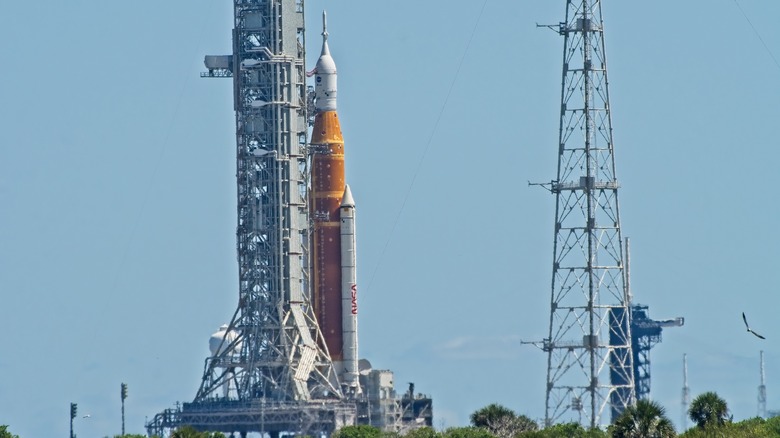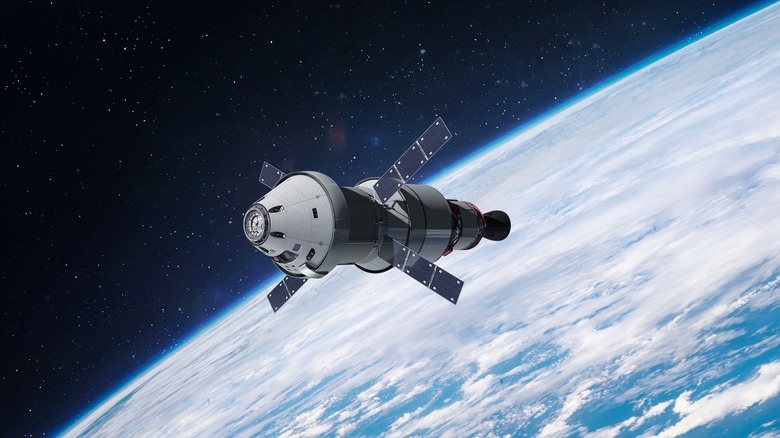NASA Sets A New Date For Artemis I Launch
NASA has set a new date for its Artemis I Moon Mission launch attempt. The initial launch was due to take place on August 29, but had to be abandoned. Artemis I is the fourth major stage in a seven-stage plan, and though the launch is unmanned, it will hopefully lay the groundwork for far bigger things. NASA's Artemis project aims to take humans back to the moon for the first time in half a century. As well as repeating what is arguably mankind's greatest achievement, the space agency will be responsible for several firsts as the project plays out. During the final stages of the project, a woman will set foot on the moon for the first time; before that, a 10-day test flight will take place, which will send a crew of astronauts further away from Earth than people have ever been before.
As iconic as a moon landing is, and as significant as putting a woman on the moon will be, Artemis is a lot more ambitious than that. If all goes to plan, the project could be humanity's gateway to the stars. One of the goals behind Artemis is to establish a permanent base orbiting the moon. The base, which is being referred to as "The Gateway," is similar in design to the International Space Station (ISS), though it will orbit the moon–which is over 240,000 miles away–instead of the earth. If all goes to plan, the Gateway will be close to a thousand times further away from the Earth's surface than the ISS is.
What went wrong with the last launch?
Artemis I was meant to blast off on August 29, but a few critical issues prevented that from happening. NASA says in a blog post that its engineers were unable to chill all four of the craft's RS-25 engines to the necessary minus 420 degrees Fahrenheit. That temperature is close to the bottom of the engines' operating range; at the other extreme, they can handle temperatures of up to 6,000 degrees Fahrenheit. Engine three showed the highest temperatures, though NASA did not confirm how many were above the minus 420 degree mark.
The four RS-25 engines, which have been a NASA stalwart since the space shuttle era, provide Artemis with just under a quarter of the 8.8 million pounds of thrust it needs to get into space. The engines weigh 8,000 pounds each, and they're packed with power. Just one, quarter dollar sized turbine blade on the engine's high-pressure fuel system generates more horsepower than a Corvette engine. Those pumps send liquid hydrogen and liquid oxygen into the engine's combustion chamber, where it is ignited (via NASA).
The space agency also says a leak was spotted on a piece called the "purge can" which forms part of the tail service mast umbilical quick disconnect. That leak was managed through a manual adjustment of propellant flow rates, and is likely to have been fixed by the time the launch goes ahead.
The launch is just a few days away
NASA has chosen Saturday, September 3, as the new launch date for Artemis I. If all goes well, we'll have ignition at 2:17 PM EST. The U.S. Space Force Space Launch Delta 45 meteorologists say there may be showers over the weekend, but they will be sporadic around the time the vessel launches; as a result, the weather window for the 2:17 PM launch has been described as "favorable." However, this may change after the Mission Management Team "reviews data and overall readiness" on September 1. If an issue is flagged, the date will likely be pushed back again.
If the historic launch goes ahead as planned, and you want to watch it live, you can do so for free on NASA's Youtube Channel, which has been embedded above. If you're not near a laptop or PC, but still want to see the event, it will also stream on NASA's app which is available on the App Store, Google Play, and Amazon.

